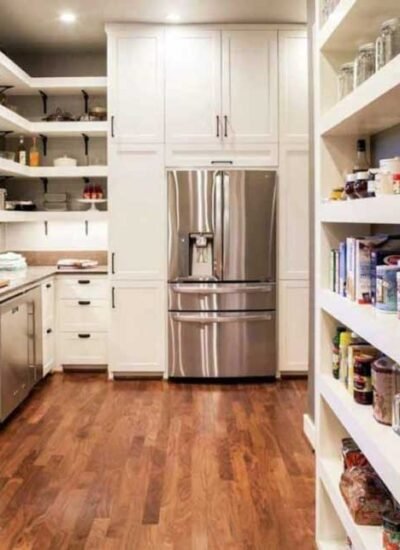Meal preparation is a lifesaver for busy households and individuals, but without organized storage, it becomes a time-wasting and stressful chore. The solution to efficient and speedy meal prep lies in the extent to which your kitchen is organized. An organized kitchen not only makes meal preparation faster, but it also ensures ingredients, tools, and containers remain accessible and easy to locate, saving time and effort in the process. Proper storage solutions allow you to achieve a streamlined cooking experience that enables healthier eating and minimizes clutter, according to Abacus Avenue Property Management experts. This article will discuss ways in which organized planning can take your meal preparation to the next level. With efficient storage in your kitchen, all the tools and ingredients you need will be within your reach, and it will be easier to prepare meals, clean, and achieve your meal planning objectives. Let’s get into the advantages of an organized kitchen!
Common Meal Prep Challenges
Meal prep quickly becomes a stressful and chaotic experience for most individuals. You’re rummaging through chaotic cabinets trying to find the right ingredients or fumbling to get the correct storage containers. Such disorganization not just wastes valuable time but also turns cooking into a chore and not a delight. Frustration increases when trying to stick to a healthy meal program but cannot seem to get back on track due to the disorganization in the kitchen. It takes longer to prepare meals, you miss essential ingredients, and before long, you’re in a mess. Lack of clear, accessible storage means food ends up expiring, items get left behind, and undue stress. A routine that could otherwise be efficient and relaxing becomes a daily battle, and in the end, results in frustration and disappointment. A disorganized kitchen means meal prep becomes more of a hindrance than a solution.
The Role of Organized Storage
One of the most effective ways to tackle the challenges of meal prep is by creating an organized and functional kitchen storage system. When your kitchen is properly organized, it not only saves time but also reduces stress, making meal prep much more enjoyable and efficient. Start by categorizing your kitchen items into sections like pantry staples, baking supplies, and spices. This helps you quickly locate what you need, avoiding unnecessary searching.
Investing in clear, stackable containers can also keep your dry goods fresh while making it easy to see what you have on hand. Labeling everything is a simple yet effective way to avoid confusion and ensure ingredients are used before they expire. For ingredients that you don’t need to access often, consider using NSA Storage for secure storage units in Colorado Springs, CO to free up valuable space in your kitchen. This way, you can store bulk items or extra kitchen equipment safely, ensuring that your kitchen remains neat and organized.
The right storage solutions also allow you to maximize vertical and underutilized spaces like the tops of cabinets and pantry shelves. By utilizing every inch of space, you can keep your kitchen clutter-free and ensure that your meal prep is efficient. When your kitchen storage is optimized, it leads to faster meal prep, less food waste, and a more enjoyable cooking experience overall. With a few simple changes, you can transform your kitchen into an organized space that works for you.
Quick Tips for Organizing Your Kitchen
Here are some simple tips to help streamline your kitchen storage and make meal prep more efficient:
- Use clear containers: Store dry goods and spices in clear, stackable containers so you can easily see what you have.
- Label everything: Label containers with expiration dates or contents to avoid confusion and waste.
- Create designated zones: Group similar items together, like baking supplies, canned goods, or snacks, for easy access.
- Utilize vertical space: Install shelves or hang storage racks to make the most of wall space.
- Declutter regularly: Go through your pantry, fridge, and drawers every few months to remove expired items or things you don’t use.
By implementing these simple tips, you’ll create a kitchen that’s organized, easy to navigate, and ready for quick meal prep.
Real-World Impact of Organization
A small family-owned catering business struggled to keep up with demand due to their disorganized kitchen storage. Ingredients were scattered, tools were hard to find, and their storage space was overflowing with unused or outdated items. As a result, meal prep times were longer than necessary, and the staff spent far too much time searching for ingredients or tools during peak service hours. This not only impacted productivity but also the quality of the food they were preparing.
Recognizing the need for a change, they decided to overhaul their kitchen storage system. They began by categorizing and organizing their pantry, labeling everything, and moving bulk items to a designated off-site storage unit. Next, they invested in clear containers and adjustable shelving, allowing them to maximize vertical space in their cabinets. The difference was immediate.
Within weeks, the business saw a 30% reduction in prep time, and staff members reported feeling less stressed during busy hours. The streamlined kitchen allowed the team to focus on creating high-quality meals rather than dealing with the clutter.
Statistic: Kitchens that implement organizational changes report up to a 40% improvement in meal prep efficiency.
By investing in simple organizational systems, this catering business was able to enhance its operations, improve efficiency, and provide better service. This case shows how thoughtful organization in the kitchen can have a direct and positive impact on overall productivity and success.
Frequently Asked Questions
How does organized kitchen storage improve meal prep?
Organized kitchen storage makes meal prep more efficient by ensuring all ingredients and tools are easy to find and access. When everything has a designated spot, you reduce the time spent searching for items, allowing you to focus on cooking rather than organizing during meal prep.
What are the best storage solutions for a small kitchen?
In a small kitchen, using stackable containers, adjustable shelving, and vertical space can make a big difference. Investing in clear containers helps with visibility, while labels keep everything organized. For items you don’t use regularly, consider storage units in Colorado Springs, CO for secure, off-site storage that keeps your kitchen clutter-free.
How do I maintain an organized kitchen long-term?
Regularly decluttering and reassessing your kitchen layout ensures that your storage systems continue to work efficiently. Make it a habit to clean out expired items and adjust your storage solutions as needed to keep things running smoothly.
Make Meal Prep a Breeze
By installing organized kitchen storage, you will be able to simplify your meal prep, minimize stress, and save time. Your needs will be better met by the right storage solutions not only for the cleanliness of your kitchen but also for your cooking efficiency, such that you will have time to enjoy preparing tasty meals. Be it a busy professional or a home chef, a neatly organized kitchen equals better meal prep. Begin to organize today and make your kitchen work better for you and reap the rewards of a streamlined cooking space.






Leave a Reply